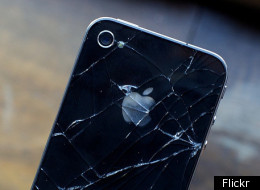
The Flip video camera Cisco discontinued this week marks the latest casualty in consumers’ migration to all-in-one gadgets. But what do we lose as our gadgets gain?
Smartphones have become 21st century Swiss Army knives that play media, give directions, take pictures and place calls, yet are smaller than point-and-shoot cameras and cost only slightly more. With the help of a few apps, they can replace everything from a newspaper to an MP3 player to Cisco’s now-extinct handheld camcorder.
As phones become increasingly advanced, users are swapping standalone gadgets for do-it-all devices and embracing a powerful trend -- bundling up instead of trading up -- that could decrease demand for certain single-use tech and upend the industry.
“The trend certainly has been toward multifunction devices, and consumers have demanded that,” said Jason Oxman, senior vice president of the Consumer Electronics Association. “They want to be able to carry their content around and get multiple functionalities out of a single device.”
Though digital camera and camcorder ownership has climbed in recent years, their sales growth pales in comparison to the meteoric rise of smartphones. The share of American households with a smartphone has nearly doubled in two years, from 23 percent in 2009 to 41 percent in 2011, according to the Consumer Electronics Association.
But what are we giving up as we bundle up? Can we really have it all—convenience, quality and reliability—with an all-in-one gadget that can both tweet and take us around an unknown city? Or are we paying a price as we opt for consolidated, bundled technology?
Smartphones offer connectivity, and ease of use, but choosing all-in-one gadgets over their single-purpose counterparts still means sacrificing quality for convenience. The photos and videos captured by smartphones can’t yet match the level of standalone cameras, which offer a slew of features, such as digital zoom, control over exposure and even facial recognition.
“The more a device does, the less it has the capacity and capability to do one thing very well,” said Oxman. “It’s a mile wide and inch deep, whereas a device that does only one thing tends to do that one thing very well.”
The quality gap is closing quickly, however. Cellphones and even MP3 players such as the iPod Touch are quickly gaining ground with technology that enables the devices to capture higher resolution images of better quality than ever before. Whereas cellphone pictures were once grainy, tiny and all but unusable, now entire weddings and films have been captured on phones. The iPhone 4’s built-in camera is comparable to digital cameras that were on the market just a handful of years ago. And Flip cameras recorded video at the same resolution, 720p, as gadgets like the iPhone 4 and HTC’s ThunderBolt.
“There are a certain number of people who still want to use standalone products because they may be of a higher quality or provide a different experience,” Oxman said. “But cellphone cameras continue to improve, so the need for a standalone, digital flash-based camera will decrease over time.”
Experts warn the migration to multipurpose gadgets may bring unanticipated privacy risks. A Nikon point-and-shoot made solely for snapping pictures might lack bells and whistles, but its limited functionality also ensures it can’t capture more than the user intended. On the other hand, many GPS-enabled phones will attach location coordinates to an image that tell exactly where a photo was taken.
“If you’re not aware of it, when you upload a picture from a mobile phone, you’re telling the world where you were standing at the moment you took the picture,” said Robert Vamosi, author of “When Gadgets Betray Us.” “We’re not seeing GPS in standalone cameras -- it’s something that has to be added to the camera -- but it comes natively on a mobile phone. If people are posting pictures taken with a mobile phone camera to the Internet, they’re also giving away personal information in a way they might not have realized.”
With smartphones making cameras essentially omnipresent, people face the constant threat of being recorded. Smartphone users constantly carry voice and video recorders with them, bringing them places they never would have before, and are able to share the information instantly -- and without permission -- all from a single screen. Surveillance can, in a sense, be crowdsourced.
The shift to multipurpose electronics also heralds what may prove to be a polarization of the consumer electronics marketplace. Affordable, but standalone, mid-range devices like camcorders and GPS systems may be increasingly cannibalized by cellphones, even as demand for high-quality, top-of-the-line devices remains strong.
What will remain could be all-in-one gadgets on one end of the spectrum, and best-in-class on the other. Cellphones may catch up to digital cameras, but professional photographers and hobbyists will always demand the best.
“These phones started out as phones,” said Vamosi. “Now, they’re computers and we need to make a paradigm shift. We need to start thinking of this device in our hands as a computer. It’s a new type of computer and it can do a lot of things that our computers can do.”
No comments:
Post a Comment